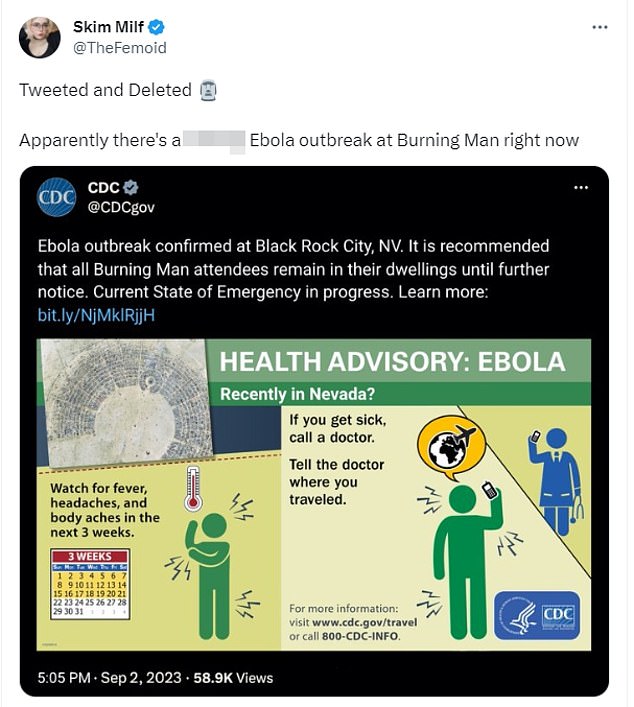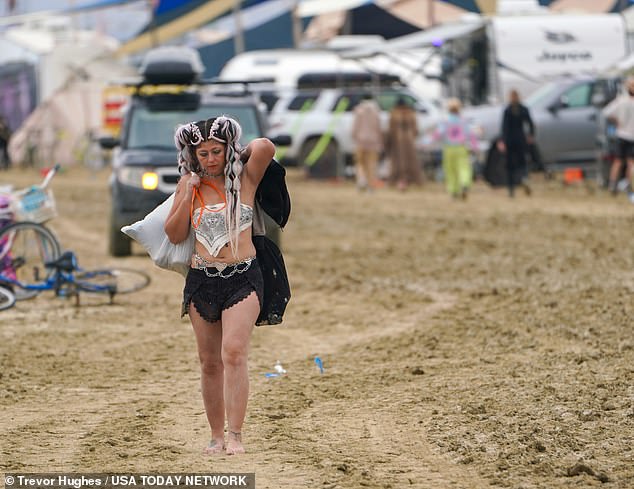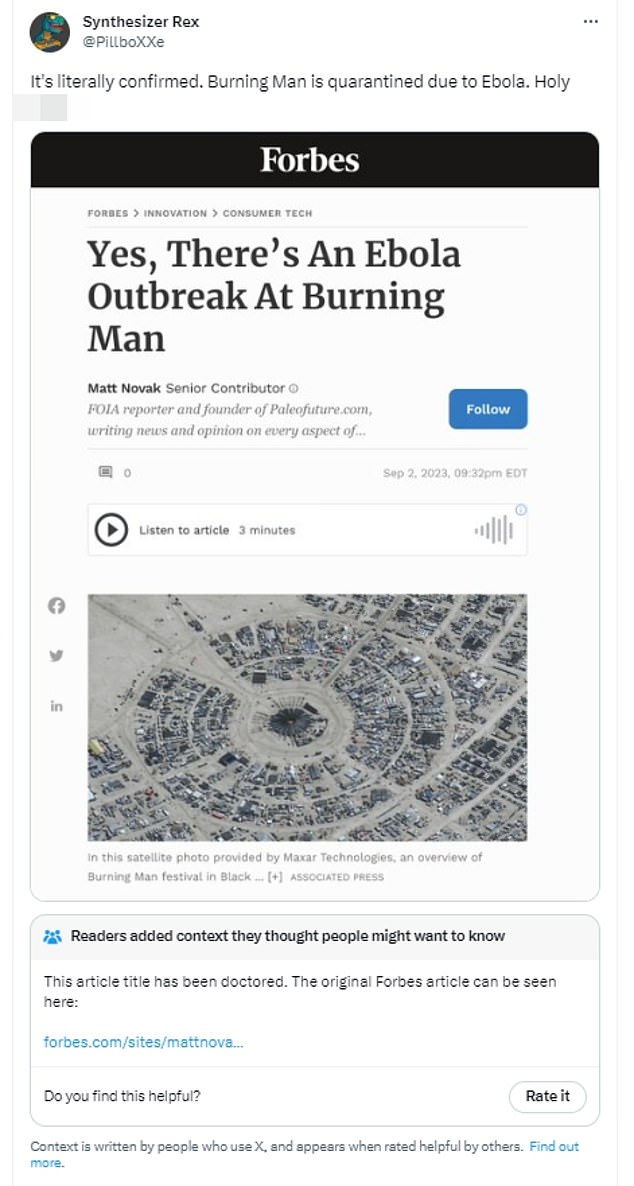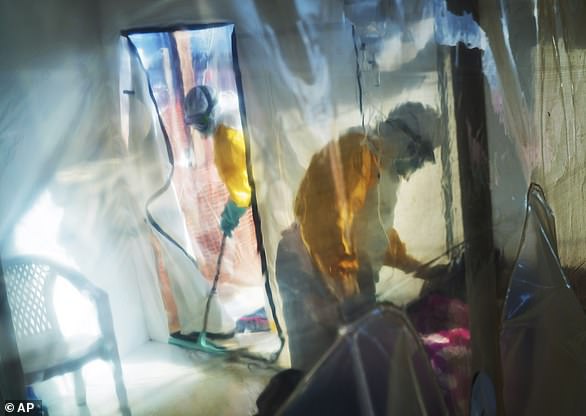False claims of an Ebola outbreak at the Burning Man concert rage among conspiracy theorists after torrential rains left 73,000 stranded in the Nevada desert
False claims of an Ebola outbreak at Burning Man have sparked anger among conspiracy theorists after severe flooding left 73,000 people stranded in the Nevada desert.
Festivalgoers were hit by torrential rain this weekend in a “post-apocalyptic style” event, with many describing themselves as “stuck” at the venue. No one has been reported to have died.
Adding to the panic, people on social media claimed that an Ebola outbreak had occurred during the concert.
The disease — which causes severe fever, headache, diarrhea or vomiting — can be fatal, killing more than 11,000 people in West Africa between 2014 and 2016.
Accounts on X, formerly known as Twitter, posted fake screenshots of alerts from the Centers for Disease Control and Prevention (CDC) warning of a suspected outbreak.
People walk down the playa near the Burning Man site in northern Nevada’s Black Rock Desert after the torrential rain

A message on X sparked the mass hysteria. It claimed to show a CDC message warning of an Ebola outbreak in Nevada
The message read, “Ebola Outbreak Confirmed in Black Rock City, NV. It is recommended that all Burning Man visitors remain in their residences until further notice. The current state of emergency is in effect.”
It has since been removed and X has added Community Notes to every other post saying it is misinformation.
There is now widespread hysteria over the outbreak, with many people taking the false claims seriously.
One account even falsified a Forbes news article claiming the outbreak was true. X has since added a comment that this is a false claim.
Another story read, “If the Ebola outbreak at The Burning Man Festival is confirmed to be true, you can be sure it was a pre-planned and calculated operation by our own government.”
Another user claimed to have tested positive for Ebola on Saturday after attending the festival.
There is no evidence that anyone at Burning Man contracted Ebola.
Burning Man is set on prehistoric Lake Lahontan, a dry bottom popularly known as the playa. The soil consists of alkaline dust, which normally causes people to cough with ‘playa lung’.
Rainfall has flooded the Nevada desert, turning the dust to clay in recent days, meaning about 73,000 revelers are trapped until the landscape dries up.
An isolated death was confirmed by the Pershing County Sheriff’s Office on Saturday and officials said it occurred “during this downpour,” but it’s unclear if it’s related to the flooding and they gave few other details.

California’s Martha Diaz walks along a muddy road at Burning Man carrying platform shoe bags

An X account faked a Forbes news article claiming the outbreak was true. X has since added a comment that this is a false claim
“As this death is still under investigation, no further information is available at this time,” the sheriff’s office said in a statement Saturday night.
Campers’ tents and structures were breached by the pouring rain, leaving many people tired, wet and muddy all weekend.
Rumors of Ebola have now fueled hysteria, which has been exacerbated especially because the festival is so isolated and offers no medical assistance.
Despite the chaos, the hedonistic crowd made the best of the situation by organizing slip-and-slides and other unique Burning Man-esque activities.
Thousands of Burning Man visitors trudged through sloppy mud on Saturday — many barefoot or with plastic bags on their feet — as flooding storms swept across the Nevada desert.
About six inches of rain are believed to have fallen on Friday at the festival site, about 110 miles north of Reno, according to the National Weather Service in Reno.
To make matters worse, the revelers suffered from hypothermia after unprecedented storms washed away the festival.
Organizers urged festival-goers already on site to “save food, water and fuel and take shelter in a warm, safe space.”

